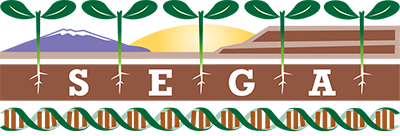You are here
Epigenetic Inheritance across the Landscape.
Publication Type:
Journal ArticleSource:
Frontiers in genetics, Volume 7, p.189 (2016)URL:
http://www.ncbi.nlm.nih.gov/sites/entrez?Db=pubmed&DbFrom=pubmed&Cmd=Link&LinkName=pubmed_pubmed&LinkReadableName=Related%20Articles&IdsFromResult=27826318&ordinalpos=3&itool=EntrezSystem2.PEntrez.Pubmed.Pubmed_ResultsPanel.Pubmed_RVDocSumhttp://www.ncbi.Abstract:
The study of epigenomic variation at the landscape-level in plants may add important insight to studies of adaptive variation. A major goal of landscape genomic studies is to identify genomic regions contributing to adaptive variation across the landscape. Heritable variation in epigenetic marks, resulting in transgenerational plasticity, can influence fitness-related traits. Epigenetic marks are influenced by the genome, the environment, and their interaction, and can be inherited independently of the genome. Thus, epigenomic variation likely influences the heritability of many adaptive traits, but the extent of this influence remains largely unknown. Here, we summarize the relevance of epigenetic inheritance to ecological and evolutionary processes, and review the literature on landscape-level patterns of epigenetic variation. Landscape-level patterns of epigenomic variation in plants generally show greater levels of isolation by distance and isolation by environment then is found for the genome, but the causes of these patterns are not yet clear. Linkage between the environment and epigenomic variation has been clearly shown within a single generation, but demonstrating transgenerational inheritance requires more complex breeding and/or experimental designs. Transgenerational epigenetic variation may alter the interpretation of landscape genomic studies that rely upon phenotypic analyses, but should have less influence on landscape genomic approaches that rely upon outlier analyses or genome-environment associations. We suggest that multi-generation common garden experiments conducted across multiple environments will allow researchers to understand which parts of the epigenome are inherited, as well as to parse out the relative contribution of heritable epigenetic variation to the phenotype.
- Log in to post comments
- Google Scholar
- RTF
- EndNote XML
- RIS
Theme by Danetsoft and Danang Probo Sayekti inspired by Maksimer
